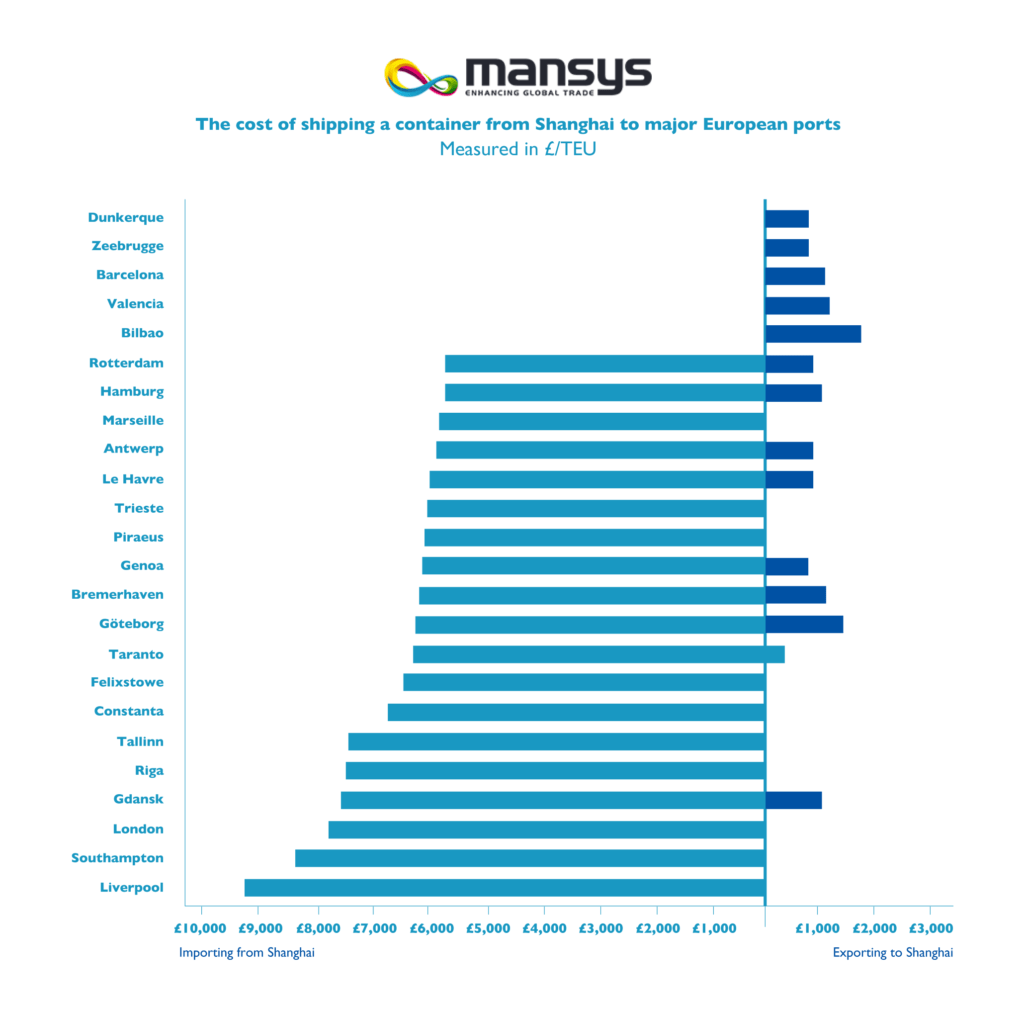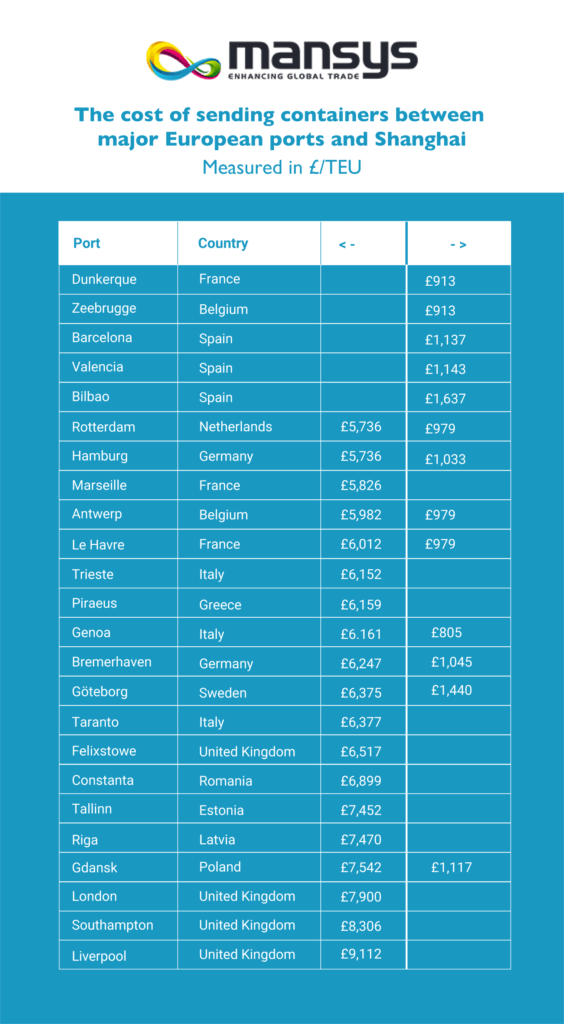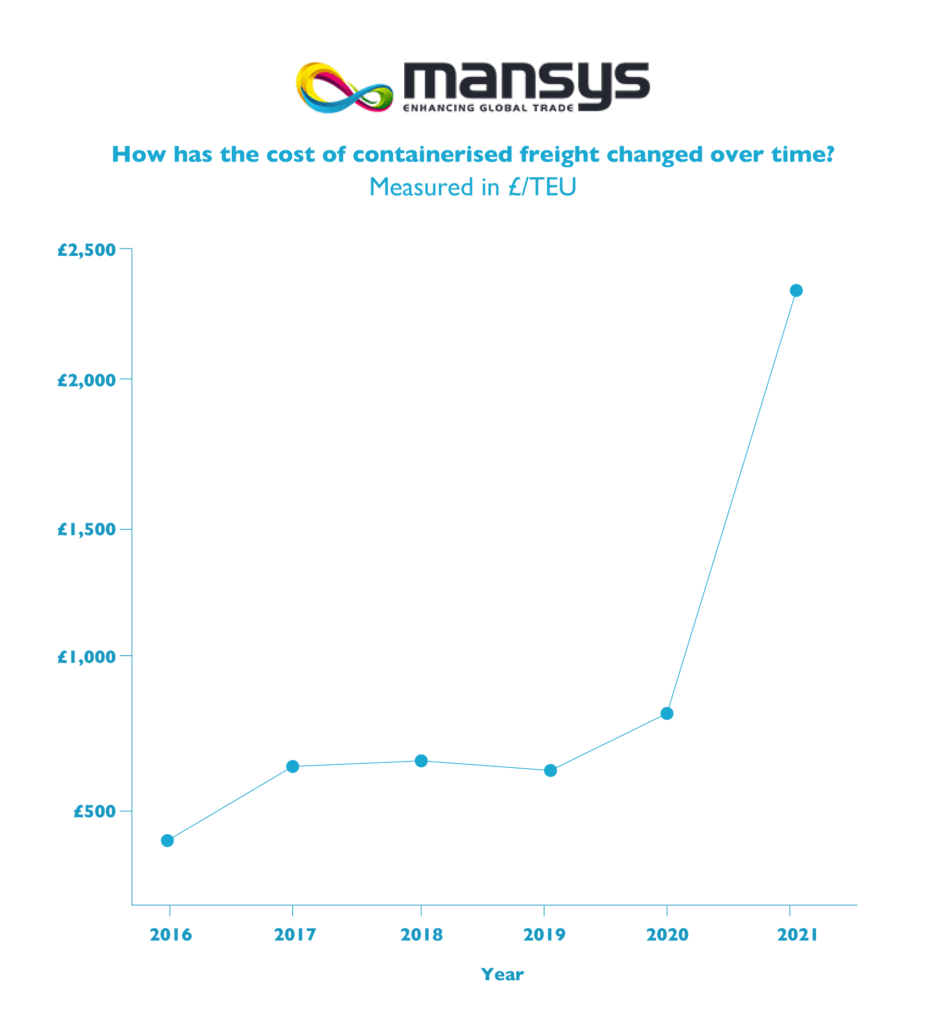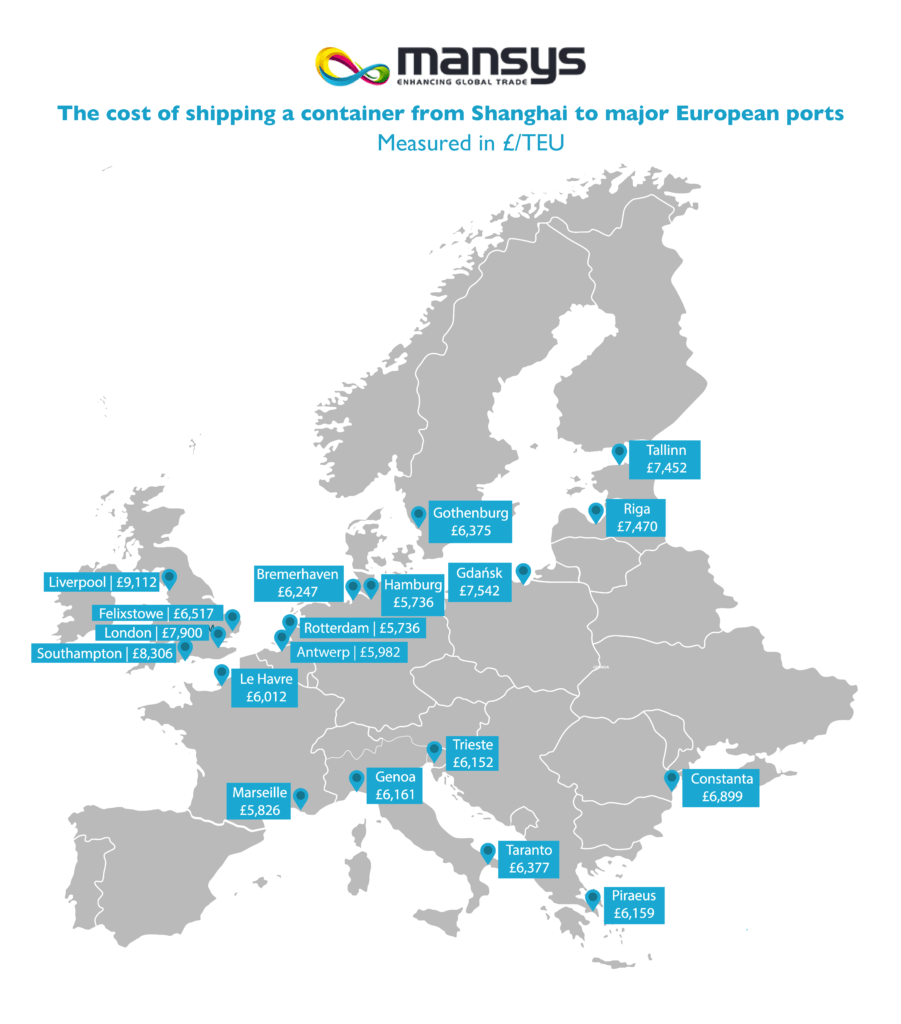Mismatched lockdowns, COVID-19 border restrictions, workers isolating, and changes to global trade logistics have created the perfect storm for supply chain issues.
The cost of shipping a container of goods has increased by up to 547% more than the seasonal average over the last five years. So, how much have shipping costs risen globally?
ManSys, experts in business management solutions for international trade, commissioned research into the average cost of shipping a TEU container of goods from Shanghai to several major European ports. The data can be accessed through the link in the methodology.
Shanghai is the busiest port globally, processing 43.3 million TEU, or 20 foot container amounts, in 2019.
The research team investigated the expense of importing a container, to reveal how the cost of containerised freight has increased recently.
The cost of sending containers between major European ports and Shanghai

In the United Kingdom, shipping costs are at an all time high. While some mainland European ports see slightly lower shipping costs, increases in the cost of importing from Shanghai are universal across Europe.
The cost of shipping a TEU container to Europe from Shanghai ranges from £5,736 to £9,112. However, the cost of shipping a TEU container back to Shanghai from Europe is significantly lower, averaging between £805 to £1,117. This is a symptom of the reduced supply of containers in China, which drives up the cost of securing one.

How has the cost of containerised freight changed over time?

Between 2016 and 2020, the average cost of containerised freight stayed consistent, slowly increasing year on year.
However, the average cost of shipping a TEU container from Shanghai rocketed this year, with freight prices jumping from an average of £855 in 2020 to £2,492 across 2021.
Since the global coronavirus pandemic hit last year, there has been a strain on supply chains. Due to COVID-19, initial economic uncertainty and localised lockdowns led to reduced consumer demand for many goods. But when restrictions began to ease and governments encouraged economic recovery, consumer savings over lockdowns were rapidly spent on goods.
The sudden surge in demand for products, along with localised lockdowns affecting production and delivery, has meant that containers aren’t where they need to be.
There’s now congestion at several ports globally and a shortage of HGV drivers across Europe, causing further supply chain issues.
The cost of shipping a container from Shanghai to major European ports

Overall, shipping a container from Shanghai to Liverpool is the most expensive sea trade-route into Europe, costing an average of £9,112 per TEU. It costs £3,376 less to ship a container from Shanghai to Rotterdam.
Since the Brexit transition period ended, on 31st December 2020, the average cost of shipping a TEU container to the United Kingdom has increased significantly. Importing from countries such as China now often requires the cooperation of an EU member state.
The cost of shipping a container from Shanghai to Rotterdam or Hamburg is the lowest of any major European ports, with both routes costing £5,736.
Will Berk, International Trade expert at ManSys, adds: “The recent increase in containerised freight costs from Shanghai is significant. It has severely impacted many companies, hugely affecting import costs. While companies importing small goods can spread additional importing costs across their supply, larger goods may see a more significant rise in pricing.
“The global shipping crisis is unlikely to abate, especially with Christmas coming up. Many companies are encouraging shoppers to buy early this year.”
How can importers offset the increase in shipping costs?
There are many costs involved when importing goods, such as:
- the cost of the products
- currency conversion costs
- international freight and logistics charges
- import charges
- port fees
- customs clearance charges
- import taxes
- local delivery costs
Importers can offset the increase in shipping costs by investing in software that improves operational efficiency when importing. Global trade software can reduce the administrative time and costs of importing, reducing the impact of additional freight costs.
Will Berk concludes: “Businesses can offset the increasing freight costs by adopting software for international trade supply management and digital customs declarations.
“As costs climb across the board, one way to counter additional costs is through digitising and automating as much of the importing process as possible, using artificial intelligence to speed up time intensive processes.”
ManSys provides Global Trade software that can reduce staff time, costs and errors when importing and exporting goods. For more information, email the team at ManSys today at info@mansys.net.
About ManSys
ManSys specialises in Global Trade management, working with a range of companies worldwide. ManSys aims to enhance a company’s operational efficiencies with International Trade and Customs software. This software allows companies to take on substantial increases in business without the need for additional staff.
With this software, businesses can monitor and improve their profitability, be more responsive to clients and improve their overall customer service.
—Methodology—
View the full dataset – The Rising Cost of Global Trade Data
Up to 547% according to Drewry Shipping, shipping a container from Shanghai to Rotterdam.
